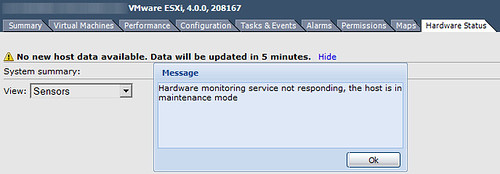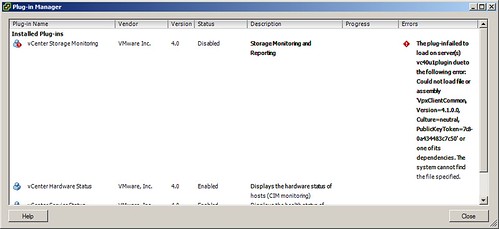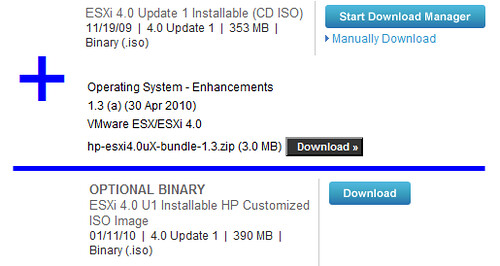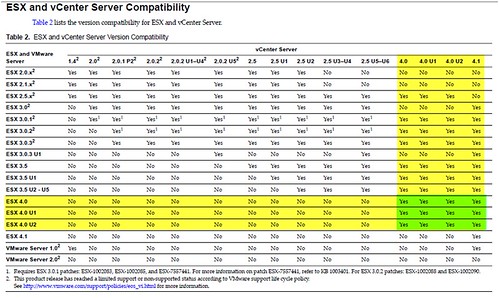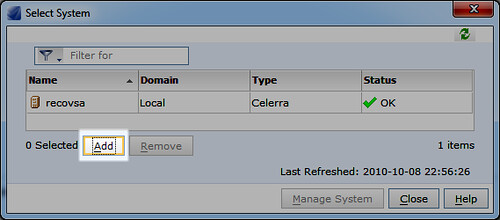Most customers expect x amount of performance out of their virtual machines which is going to be dependent on established Service Level Agreements (SLAs). Capacity planning, tuning, and monitoring performance all play a role in meeting customer SLAs. When questioning performance of a physical machine, one of the first ubiquitous metrics that comes to mind is CPU utilization. Server administrators are naturally inclined to look at this metric on virtual machines as well. However, when looking at VM performance, Ready time is an additional metric to be examined from a CPU standpoint. This metric tells us how much time the guest VM is waiting for its share of CPU execution from the host.
I began learning ESX in 2005 on version 2.0. At that time, the VMware ICM class focused a lot on leveraging the Service Console. At that time, vCenter Server 1.x was brand new and as such, ESXTOP was king for performance monitoring. In particular, the %RDY metric in ESXTOP was used to reveal CPU bottlenecks as described above. %RDY provides statistics in a % format. I learned what acceptable tolerances were, I learned when to be a little nervous, and I could pretty well predict when the $hit was hitting the fan inside a VM from a CPU standpoint. Duncan Epping at Yellow Bricks dedicates a page to ESXTOP statistics on his blog and at the very beginning, you’ll see a threshold he has published which you should keep in the back of your mind.
Today, ESXTOP still exists fortunately (it’s one of my favorite old-school-go-to tools). The Service Console is all but gone, however, you’ll still find resxtop in VMware’s vMA appliance which is used to remotely manage ESXi (and ESX as well). But what about the vSphere Client and vCenter Server? With the introduction of vCenter Server, the disappearance of the Service Console, and the inclination of a Windows based administrator to lean on GUI based tools as a preference, notable focus has moved away from the CLI approach in lieu of the vSphere Client (in conjunction with the vCenter Server).
Focusing on a VM in the vSphere Client, you’ll find a performance metric called CPU Ready. This is the vSphere Client metric which tells us how much time the guest VM is waiting for its share of CPU execution from the host just as %RDY did in ESXTOP. But when you look at the statistics, you’ll notice a difference. %RDY in ESXTOP provides us with metrics in a % format. CPU Ready in the vSphere Client provides metrics in a millisecond summation format. I learned way back from the ICM class and through trench experience that ~10% RDY (per each vCPU) is a threshold to watch out for. How does a % value from ESXTOP translate to a millisecond value in the vSphere Client? It doesn’t seem to be widely known or published but I’ve found it explained a few places. A VMware communities document here and a Josh Townsend blog post here.
There’s a little math involved. To convert the vSphere Client CPU Ready metric to the ESXTOP %RDY metric, you divide the CPU Ready metric by the rollup summation (which are both values in milliseconds). What does this mean? Say for instance you’re looking at the overall CPU Ready value for a VM in Real-time. Real-time is refreshed every 20 seconds and represents a rollup of values over a 20 second period (that’s 20,000 milliseconds). Therefore…
- If the CPU Ready value for the VM is, say 500 milliseconds, we divide 500 milliseconds by 20,000 milliseconds and arrive at nearly 3% RDY. Hardly anything to be concerned about.
- If the CPU Ready time were 7,500, we divide 7,500 milliseconds by 20,000 milliseconds and arrive at 37.5% RDY or $hit hitting the fan assuming a 1 vCPU VM.
What do I mean above by 1 vCPU VM? The overall VM CPU Ready metric is the aggregate total of CPU Ready for each vCPU. This should sound familiar – if you know how %RDY works in ESXTOP, then you’re armed with the knowledge needed to understand what I’m explaining. The %RDY value in ESXTOP is the aggregate total of CPU Ready for each vCPU. In other words, if you saw a 20% RDY value in ESXTOP for a 4 vCPU VM, the actual %RDY for each vCPU is 5% which is well under the 10% threshold we generally watch for. In the vSphere Client, not only can you look at the overall aggregate CPU Ready for a particular VM (which should be divided by the number of assigned vCPUs for the VM), but you can also look at the CPU Ready values for the individual vCPUs themselves. It is the per CPU Ready value which should be compared with published and commonly known thresholds. When looking at Ready values, it’s important to interpret the data correctly in order to compare the right data to thresholds.
I’ve often heard the conversation of “how do I convert millisecond values in the vSphere Client to % values in ESXTOP?” I’ve provided a working example using CPU Ready data. Understand it can be applied to other metrics as well. Hopefully this helps.
